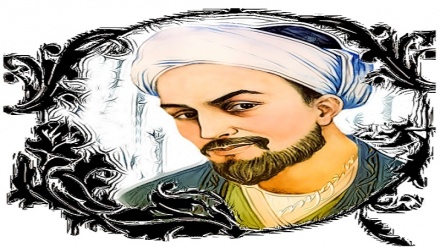Iranian notables, sources of global honor (97)
Welcome to the 97th weekly episode of the series Iranian Notables, Sources of Global Honor. One of the most important contributors to development and growth of arts in the Timurid era was the presence of art-loving courtiers, who via relentless support for arts, played a crucial role in the growth of arts in Iran.
Last week, we spoke of the prominent thinker, poet, literary figure, author, and politician of 9th Century AH, Amir Ali Shirnavai; a global figure, who rendered valuable services in different domains and left unique works behind.
It was said that the era of rule of Timurid dynasty was one of the most glorious periods of time in Iran. Given the untiring support of this dynasty for culture and arts, a brilliant era in the history of Iran’s culture and civilization took shape. This era was characterized with empowerment of cultural elites. Amir Ali Shirnavai, the knowledgeable and art-loving vizier of Sultan Hussein Baiqara, is considered to be one of the prominent figures of this phase in time.
Born into a virtuous family, in the city of Herat on February 9, 1441, he completed his studies in his hometown. Upon the empowerment of Sultan Hussein Baiqara, this ruler instated Amir as his vizier. In that phase in time, all art-lovers came to the royal court of Sultan Hussein Baiqara; enjoying Amir’s support; and creating ever-lasting works. However, the resentments and jealousy of the courtiers forced Amir to tender his resignation. Amir was instated as the governor of Astarabad Province. He remained in this post for two years, and later passed away over there, in the year 906 AH.
Undoubtedly, one of the most important factors behind the growth and development of arts in Timurid era was the presence of art-loving courtiers, who via their relentless support, played a major and decisive role in growth of arts. The role model of Timurid dynasty in this domain was Timor, himself. He made utmost efforts for development of Samarqand, and destined several architects, craftsmen, artists, and scientists toward this city in a bid to make the best of their skills for further beautification of Samarqand. His successors followed suit. Although the political power of Timurid courtiers was continuously declining, their courts remained as hubs of major cultural and artistic movements.
Many of the courtiers and members of Timurid dynasty focused on arts, such that upon the unwavering support of some of the spouses of rulers Timor and Shahrokh, several buildings were constructed. The sons of Timurid ruler, Shahrokh, developed interests in arts and culture. Some of them, in addition to cultivating and supporting artists, were skilled in different kinds of arts. Shahrokh’s first son, Mirza Ologh Beig, after instatement as the governor of Samarqand, turned this city into a scientific and cultural hub. Ologh Beig, who maintained a sublime talent and skill in astronomy, established a large and unique observatory in Samarqand. He also paid attention to, and supported poets and artists.
Meanwhile, the main art-loving courtier of this era was Mirza Baisanqar, who in addition to being a poet, calligrapher, and music-lover, was one of the main supporters of arts and book-lovers, in the world. In his workshop, many writers and painters were engaged in creating major literary feats in Farsi language.
An art-loving ruler such as Sultan Hussein Baiqara, was accompanied by a prudent and art-loving vizier such as Amir Ali Shirnavai. This prudent vizier, who was a highly capable poet, maintaining a delicate taste in poetry, made every effort to promote culture and arts. His unwavering support for art and artists has turned him into a unique figure.
Innumerable buildings were constructed with his support, and many artists, such as Behzad and Sultan Ali Shah were backed by Amir.
Amir Ali Shirnavai communicated with artists, supporting them, and making use of their talents and abilities. His support for artists led to the growth and elevation of many architects, musicians, painters, and calligraphers. He also penned many books in Farsi and Turkish languages, while assisting the publication of a number of other books.
Amir Ali Shirnavai promoted Herat’s literary and artistic school of thought, and turned this city into a hub of poetry, literature, music, painting, and calligraphy. In the company of Sultan Hussein Baiqara, Amir spent a tidy sum for preparation of valuable books, which were one of a kind.
One of the other important cultural activities of this prominent Iranian vizier was his unwavering support for scientists. In those days, many scientists who were supported by Amir Ali Shirnavai authored numerous books.
The craftsmen and artists drew the attention of Shirnavai, given that he was highly interested in architecture and construction of buildings and bridges, and made use of arts for beautification of these sites.
MR/SS


